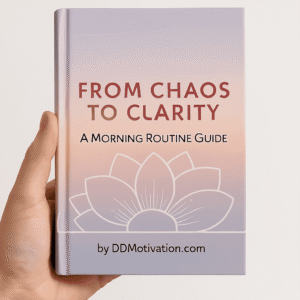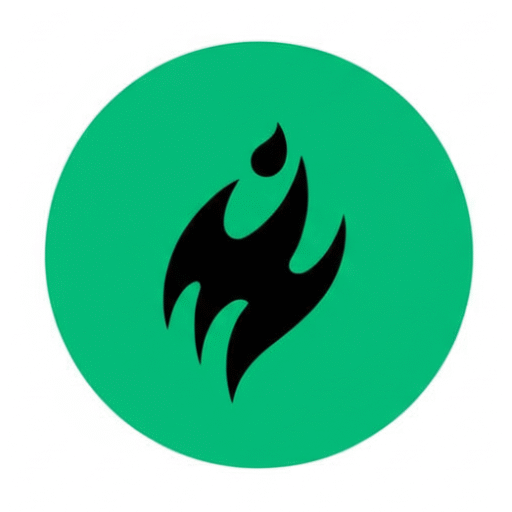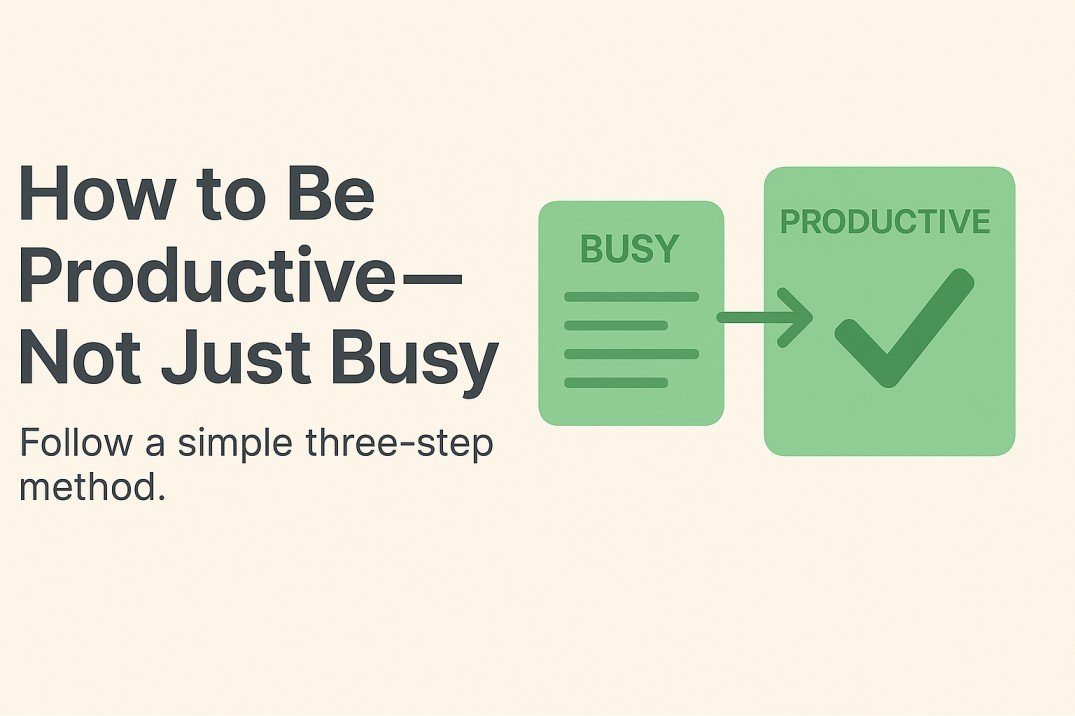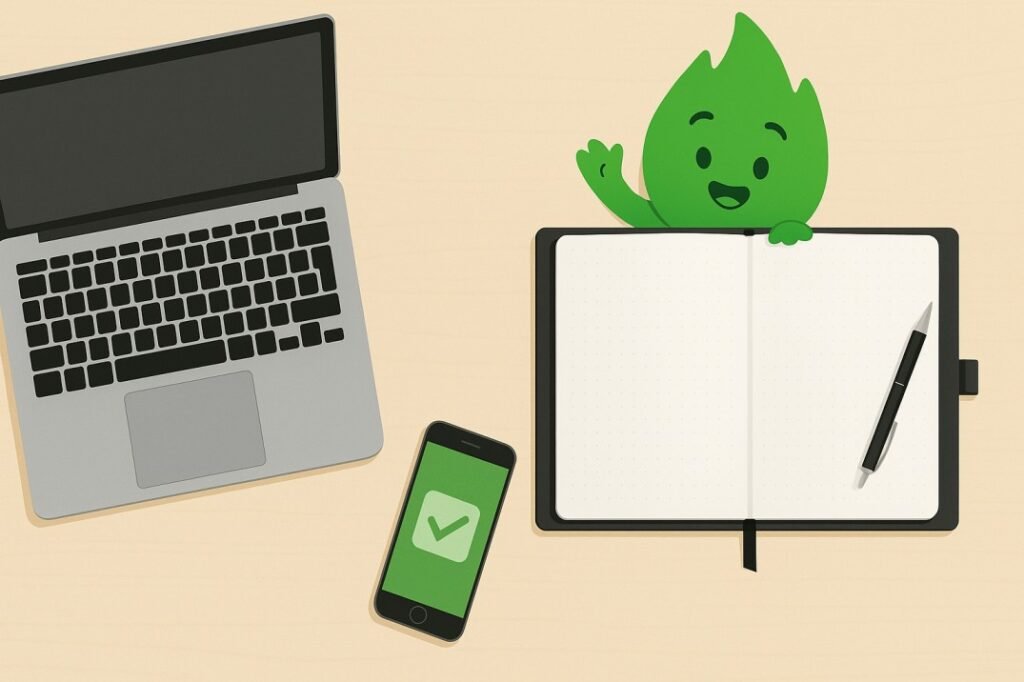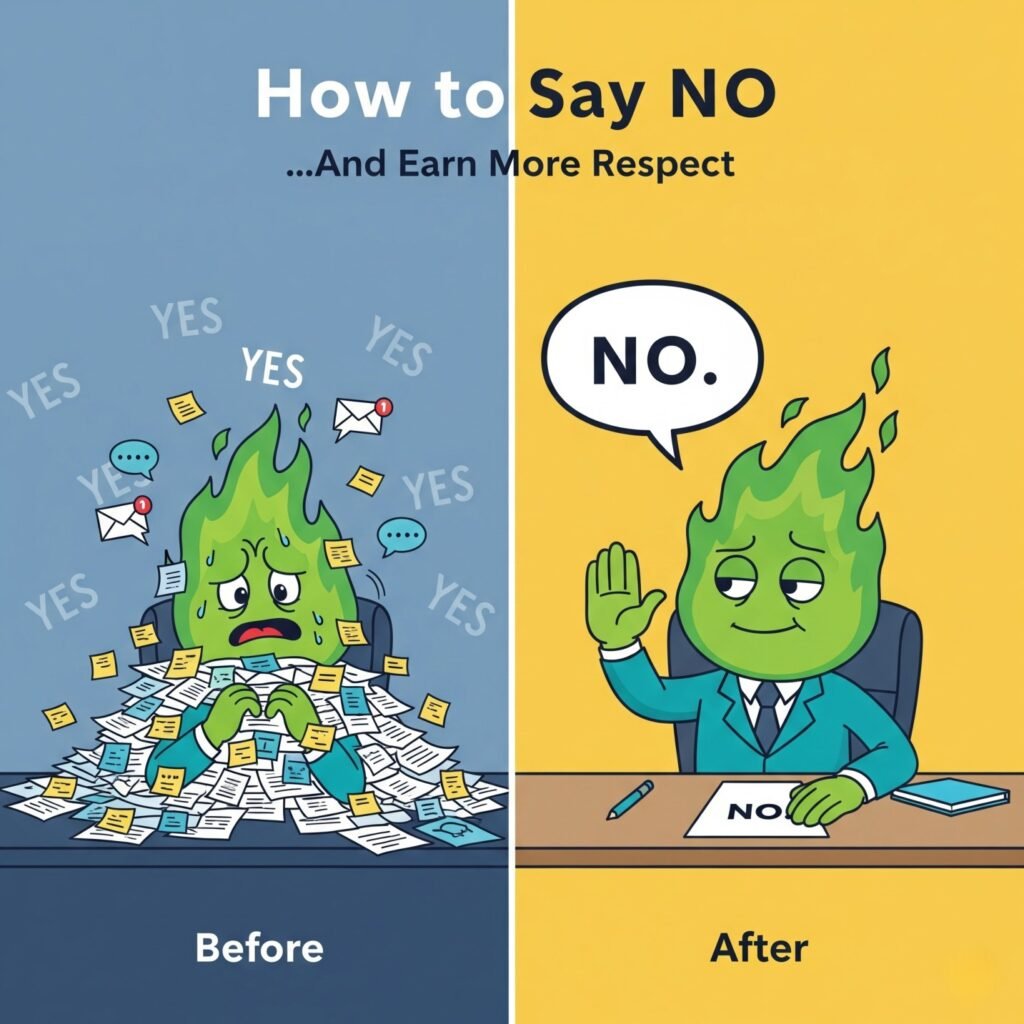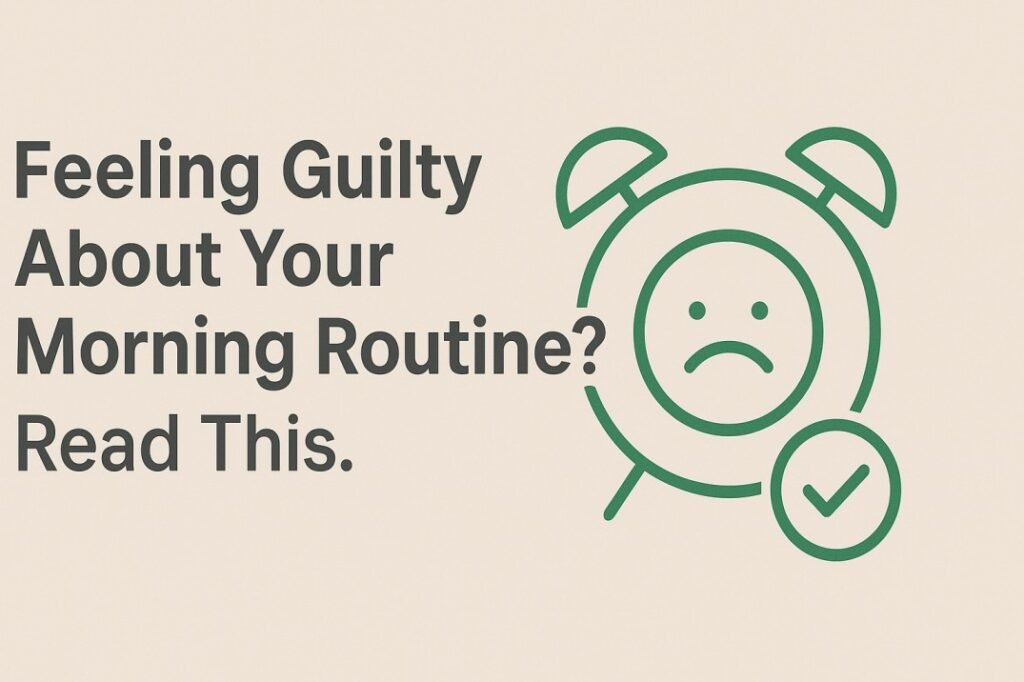Your to-do list is a mile long. You rush from task to task, your phone buzzes with non-stop notifications, and you wear your packed calendar like a badge of honor. By the end of the day, you collapse, completely exhausted.
Sound familiar?
But when you take a quiet moment to look back at your week, a nagging question appears: What did I actually accomplish? It feels like you ran a marathon but never crossed a finish line. You were busy, but were you productive?
If this hits close to home, you’re not alone. We live in a culture that glorifies “the hustle,” but often mistakes motion for progress. This article will shine a light on the crucial difference between being busy and being productive. More importantly, it will give you a simple, 3-step framework to escape the “busyness trap” for good.
Let’s dive in and learn how to transform your hard work into real, meaningful results.
What Does Being “Busy” Actually Mean?
Imagine a hamster running furiously on its wheel. It’s expending a ton of energy, its little legs are a blur, and it’s definitely doing something. But is it going anywhere?
That’s the perfect picture of being busy.
Busyness is about volume and motion. It’s about filling your time with tasks, regardless of their value. It’s an addiction to a full calendar and an overflowing inbox.
A busy person’s day is often defined by:
- A focus on inputs: They measure success by the hours worked or the number of tasks completed.
- Constant multitasking: Juggling emails, phone calls, and multiple projects at once, leading to scattered attention.
- Reactive work: Their day is controlled by other people’s demands. They immediately respond to every notification and email as it arrives.
- Saying “yes” to everything: They have a hard time turning down requests because they feel they should be able to do it all.
- Having many priorities: Which, in reality, means having no priorities.
Being busy makes you feel important and needed. The problem is, busyness is a poor indicator of progress. It often leads to burnout, not breakthroughs.
And What Does It Mean to Be “Productive”?
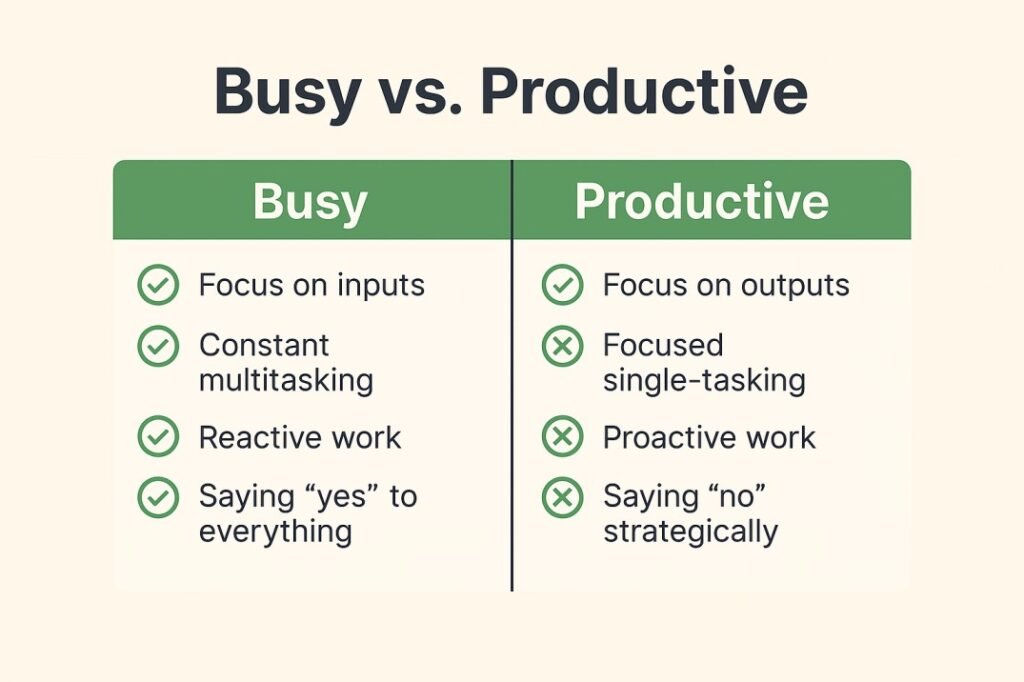
Now, imagine a master builder constructing a house. She isn’t rushing. She carefully selects each brick, applies the right amount of mortar, and places it with precision. Each action serves a single purpose: to build a strong, stable wall. That’s the essence of being productive.
Productivity is about direction and results. It’s about consciously choosing to work on the few things that create the most impact and move you closer to a meaningful goal.
A productive person’s day is defined by:
- A focus on outputs: They measure success by the meaningful results achieved.
- Focused single-tasking: They dedicate blocks of uninterrupted time to their most important work.
- Proactive work: They set their own agenda based on their goals, rather than reacting to external demands.
- Saying “no” strategically: They understand that every “yes” to a low-value task is a “no” to a high-value one.
- Having clear priorities: They know the 1-3 things that matter most each day and tackle them first.
Productivity isn’t about doing more; it’s about doing more of what matters. It’s the difference between spinning your wheels and building your empire, one intentional brick at a time.
Why We Get Stuck in the Busyness Trap (It’s Not Your Fault)
If being productive is so much better, why do we all fall into the busyness trap? It’s not a personal failing; it’s rooted in our psychology and societal pressures.
- Busyness Feels Good: Checking off a small, easy task (like answering a simple email) gives your brain a tiny hit of dopamine, a feel-good chemical. Your brain loves this reward and craves more, so it encourages you to keep doing easy, low-impact tasks.
- Busyness is a Status Symbol: Our culture often celebrates “hustle.” We see people bragging about working 12-hour days or having no free time. This creates an external pressure to appear busy to prove our worth.
- Busyness Avoids Hard Questions: When you’re constantly rushing, you don’t have time to ask the big, scary questions: “Am I on the right path?” or “Is this what I really want?” Busyness can be a convenient shield against deep thinking and potential uncertainty.
- Lack of Clarity: If you don’t know what your most important goals are, then every task seems equally important. Without a clear destination, you’ll just wander aimlessly, mistaking any movement for progress.
Recognizing these traps is the first step to escaping them. Now, let’s build your escape plan.
How to Escape the Trap: Your 3-Step Framework for True Productivity
Switching from busy to productive doesn’t require a complete life overhaul. It just requires a shift in mindset and a simple system. Follow these three steps.
Step 1: Define Your “Win” — Gain Absolute Clarity
You would never start a road trip without knowing your destination. Yet, we often start our workday, week, or even year without a clear definition of what we want to achieve.
Productivity starts with knowing your “win.”
How to do it: Before you dive into your to-do list, ask yourself one powerful question, inspired by the book The ONE Thing:
“What’s the ONE Thing I can do, such that by doing it, everything else will be easier or unnecessary?”
This question forces you to identify the domino that will knock over all the others.
- For a student: It might be “Finish the research for my history essay,” not “check my email.”
- For an entrepreneur: It might be “Call 5 potential clients,” not “redesign my logo for the tenth time.”
To make your “win” even clearer, use the SMART goals framework. Make sure your objective is:
- Specific
- Measurable
- Achievable
- Relevant
- Time-bound
Actionable Example:
- Vague (Busy) Goal: “Work on my blog.”
- SMART (Productive) Goal: “Write and publish one 1,500-word blog post on the topic of time blocking by Friday at 5 PM.”
Step 2: Separate the Signal from the Noise — Ruthless Prioritization
Once you know your destination, you need to choose the right road to get there. In a world full of distractions, this means separating the “signal” (important tasks) from the “noise” (everything else).
The best tool for this is the Eisenhower Matrix, a simple framework used by U.S. President Dwight D. Eisenhower. It helps you categorize tasks based on two factors: urgency and importance.
How to use it: Draw a four-quadrant box and sort your tasks.
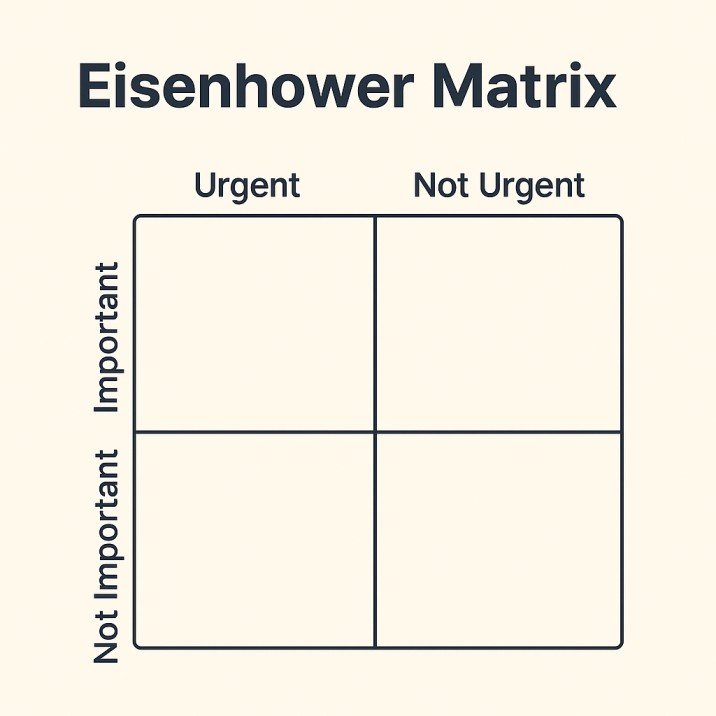
- Quadrant 1: Urgent & Important (DO): These are fires you must put out. Crises, pressing problems, and deadline-driven projects. Handle these immediately.
- Quadrant 2: Not Urgent & Important (SCHEDULE): This is where true productivity lives. These are activities that help you achieve your long-term goals. Examples: planning, exercising, learning a new skill, building relationships, deep creative work. You must schedule time for these, or they will never get done.
- Quadrant 3: Urgent & Not Important (DELEGATE): These are the biggest productivity killers. They feel important because they are time-sensitive, but they don’t move you toward your goals. Examples: many meetings, some emails, interruptions from colleagues asking for a “quick favor.” The goal is to minimize, delegate, or automate these tasks.
- Quadrant 4: Not Urgent & Not Important (DELETE): These are time-wasters. Mindless social media scrolling, watching random videos, unnecessary “organizing.” Eliminate these ruthlessly.
Busy people live in Quadrants 1 and 3. They spend their days putting out fires and reacting to others’ needs. Productive people spend most of their time in Quadrant 2. They proactively schedule and protect time for what truly matters.
Step 3: Execute with Focus — Master the Art of Deep Work
You have your clear goal (Step 1) and your top priority (Step 2). Now comes the final, crucial part: doing the work without distraction.
This means embracing “deep work,” a term coined by Cal Newport for the ability to focus without distraction on a cognitively demanding task. It’s the opposite of “shallow work” (like answering emails while on a call), which is what keeps you busy but unproductive.
How to do it:
- Time Blocking: This is the ultimate focus technique. Instead of working from a to-do list, schedule blocks of time directly into your calendar to work on your high-priority (Quadrant 2) tasks. For example, block out “9:00 AM – 10:30 AM: Write First Draft of Project Report.”
- Treat these blocks like real appointments. You wouldn’t cancel a meeting with your CEO, so don’t cancel a meeting with your goals.
- Create a “No-Fly Zone” for Distractions: During your time block, be unreachable.
- Put your phone on silent and in another room.
- Close all unnecessary browser tabs.
- Turn off email and social media notifications.
- If you’re in an office, put on headphones or let your team know you’re in a focus session.
This focused execution is the engine of productivity. A 90-minute session of deep, focused work is more valuable than 8 hours of distracted, shallow work.
Putting It All Together: A Tale of Two Workers
Let’s see how this plays out in a real day.
Busy Brian wakes up and immediately grabs his phone, scrolling through emails and news. He spends his day in reactive mode, answering every Slack message instantly and hopping between 10 different tasks. He works for 10 hours, feels completely drained, and his most important project is still sitting on his desk, untouched.
Productive Paula wakes up and spends 5 minutes reviewing her main goal for the week. She identifies her #1 priority for the day. Before checking any email, she sets a timer for 90 minutes and does a deep work session on that priority. She makes huge progress. Then, she opens her email and handles it in a single batch. She works for 8 hours, finishes her most important task, and leaves work feeling accomplished and energized.
Be Paula, not Brian.
From Busy Bee to Productive Builder
The shift from being busy to being productive is a journey, not a destination. It’s about building new habits, one day at a time.
Don’t try to change everything at once. Start small.
This week, focus on these three things:
- Clarity: Each morning, ask yourself, “What’s my #1 priority today?”
- Prioritization: Glance at your to-do list and ask, “Is this a Quadrant 2 task, or am I just reacting?”
- Focus: Schedule just one 60-minute “deep work” session and protect that time fiercely.
By swapping frantic motion for focused direction, you’ll not only achieve your biggest goals but also reclaim your time, energy, and sanity. You’ll finally feel the deep satisfaction that comes from making real, tangible progress.
Your Turn!
You’ve learned the difference and have a framework to fix it. Now it’s time to take action.
What is the #1 thing you will do this week to shift from being busy to being productive? Share your commitment in the comments below! I read and reply to every single one.
